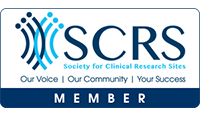A migraine is a pulsating pain in the head, also mistaken for a headache. The narrowing of blood vessels caused by serotonin from electrical activity affects the nerves of the brain which causes pain also known as a migraine. A headache is pain in the upper region of the body such as head, face, and neck. This is similar to a migraine, however a migraine has more severe symptoms. Some of these migraine symptoms can even be debilitating.
The diagnosis criteria for an adult versus a child is not similar, which in return makes it hard to recognize a pediatric migraine. Migraines are not gender or age specific and happen to many children even before the age of 10.
There are 4 Stages of a Migraine:
Pre-Headache Phase
During this phase, both children and adults can experience mood changes. Adults may also suffer from diarrhea or constipation, fatigue, and muscle stiffness. While children could become pale and tired looking.
Aura Phase
In the aura phase, a child usually experiences disturbances with their vision. Adults also have vision concerns but at times hearing can be affected as well.
Headache Phase
A child may start having temper tantrums, complain that their head hurts, and possibly even want to stop whatever they are doing whether it is eating, playing, or sleeping. Young children have a hard time explaining when they have this pain but noticing the changes in their mood and actions is important.
Post-Headache Phase
Once a migraine resolves the post-headache phase occurs. During this time, it is seen that a child can show signs of sleepiness, dehydration, hunger, and vision changes/eye pain. Adults have mentioned being weak, body stiffness, fatigue, and dizziness.
As the length of a migraine varies in each specific person. It is said that migraines last longer in adults versus children. So, what is really the difference in the side effects of a migraine for a child compared to an adult, let’s take a look at the symptom differences.
Pediatric Migraine Symptoms
- Vomiting
- Irritability
- Visual disruptions
- Sweating
- Pain
Adult Migraine Symptoms
- Sensitivity to light and sounds
- Abdominal pain
- Vertigo
- Sensitivity to odors
Understanding that there is in fact a difference between how a migraine affects a child compared to an adult has changed the process for diagnosing and treating someone with a migraine.
Visit our studies page to learn more about the current migraine clinical studies we are enrolling participants in.



